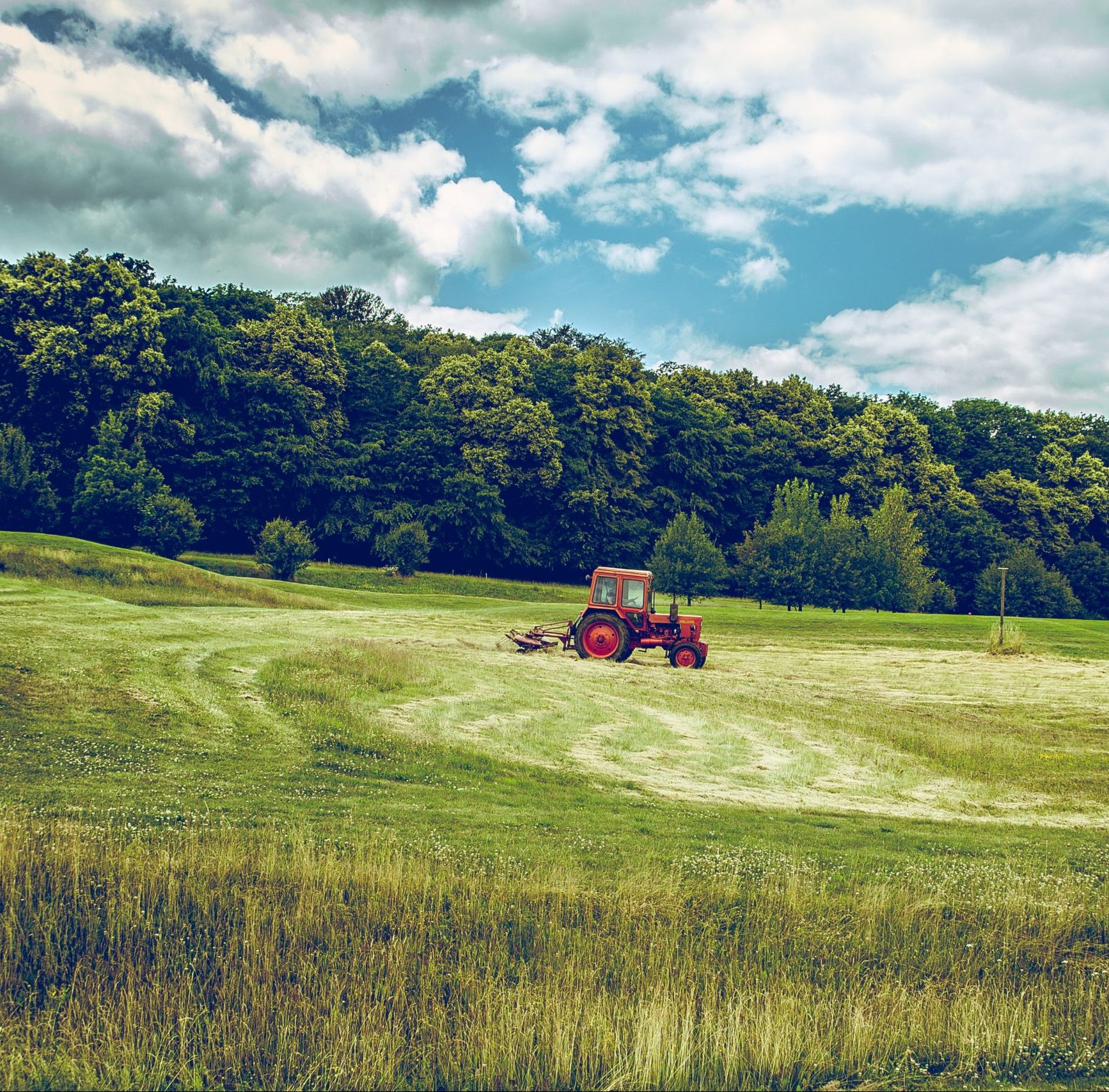Invitation: Partnerships for Climate Smart Agriculture
USDA Grant opportunity up to $5M
due June 10th
Carbon reduction – Soil, Energy, Fertilizer
We’re partnering with a few farms
(1) To facilitate the grant application process,
(2) Provide regenerative ag expertise and emerging technologies, and
(3) Support locally resilient market development for long-term community benefit.

See below for farm best fit qualifications.
Climate Smart Agriculture Grant – Background
+ A new agriculture food product category
USDA will distribute $1 billion in grants to establish a new agriculture food product category named a Climate Smart Commodity.
Any agriculture product can qualify if they can connect carbon reduction impact to the proposed agriculture changes and track those verified impacts through the supply chain to the buyer and build demand for their Climate Smart crops and food products.
We’re here to help you every step of the way.
+ Grants from $250,000 to under $5,000,000
The grant size we are supporting will range from $250,000 to under $5,000,000. In this category, forty percent of the grant funds must be linked directly to benefiting underserved and disadvantaged communities. These grant funds can cover the costs to implement various carbon reduction practices and test new natural inputs including biochar. The funds do not require a match and using them for proof of concept and pilot projects is encouraged. The grant program is designed to cover all implementation costs.
+ Historically Underserved Communities
Examples of historically underserved are farmers/ranchers and landowners/operators with limited resources, minority groups (including American Indians, Alaskan Natives and Aleuts), women, and the physically challenged. Underserved farmers may also include small farmers, organic farmers, and other farmers with nontraditional production practices.
+ Links to USDA Grant documents
- Full Announcement_USDA-NRCS-COMM-22-NOFO0001139
- Partnerships for Climate-Smart Commodities – main site
- Webinar: Partnerships for Climate-Smart Commodities – Second Funding Pool Outreach (Mar. 3, 2022)
- Webinar recording video
- Presentation slides (PDF, 1.3 MB)
- Webinar: Partnerships for Climate-Smart Commodities – Details of the Funding Opportunity (Feb. 16, 2022)
- Webinar recording video
- Presentation slides (PDF, 1.5 MB)
- Notice of Funding Opportunity (Applicants must apply with the official application package on Grants.gov)
- USDA Climate Solutions
- Frequently Asked Questions – Key information being updated regularly. Some of it is below.
Q: What types of producers are considered historically underserved for this funding opportunity?
A: Highly competitive proposals will demonstrate how they will provide benefits to producers, including producers who fall within USDA definitions of small and/or historically underserved producers. Historically underserved producers generally include beginning farmers, socially disadvantaged farmers, veteran farmers and limited resource farmers; women farmers, and producers growing specialty crops, are generally also included in these categories.
Q: What kind of equipment can be paid for under this grant opportunity?
A: To have capital expenditures for equipment considered for funding, applicants should include a detailed justification in their budget narrative supporting a finding that it qualifies as special versus general purpose equipment, explaining why the equipment is necessary for the successful completion of the project goals, and what “scientific or technical activities” related specifically to the project objectives it will be used for. If the budget is approved, this satisfies the “prior approval” requirement.
Note: Capital expenditures for general purpose equipment, buildings, and land, and for improvements to land, buildings, or equipment which materially increase their value or useful life are generally not allowable costs for these awards. Additionally, capital expenditures for equipment must be in accordance with the provisions of 15 U.S.C. 714b(h), including but not limited to a prohibition on the use of grant funds for the purpose of constructing or purchasing refrigerated cold storage facilities.
The following regulatory definitions from 2 CFR part 200 apply:
Equipment means tangible personal property (including information technology systems) having a useful life of more than one year and a per-unit acquisition cost which equals or exceeds the lesser of the capitalization level established by the non-Federal entity for financial statement purposes, or $5,000.
General purpose equipment means equipment which is not limited to research, medical, scientific or other technical activities. Examples include office equipment and furnishings, modular offices, telephone networks, information technology equipment and systems, air conditioning equipment, reproduction and printing equipment, and motor vehicles.
Special purpose equipment means equipment which is used only for research, medical, scientific, or other technical activities. Examples of special purpose equipment include microscopes, x-ray machines, surgical instruments, and spectrometers.
Capital assets means:
(1) Tangible or intangible assets used in operations having a useful life of more than one year which are capitalized in accordance with GAAP. Capital assets include:
(i) Land, buildings (facilities), equipment, and intellectual property (including software) whether acquired by purchase, construction, manufacture, exchange, or through a lease accounted for as financed purchase under Government Accounting Standards Board (GASB) standards or a finance lease under Financial Accounting Standards Board (FASB) standards; and
(ii) Additions, improvements, modifications, replacements, rearrangements, reinstallations, renovations or alterations to capital assets that materially increase their value or useful life (not ordinary repairs and maintenance).
(2) For purpose of this part, capital assets do not include intangible right-to-use assets (per GASB) and right-to-use operating lease assets (per FASB). For example, assets capitalized that recognize a lessee’s right to control the use of property and/or equipment for a period of time under a lease contract. See also § 200.465.
Capital expenditures means expenditures to acquire capital assets or expenditures to make additions, improvements, modifications, replacements, rearrangements, reinstallations, renovations, or alterations to capital assets that materially increase their value or useful life.
- Can aquaculture be considered a commodity under this funding opportunity?
A: Aquaculture may be included as a potential commodity under Partnerships for Climate-Smart Commodities. Producers will be required to establish a farm and tract as well as meet other requirements in the funding opportunity. The range of agricultural commodities that may be included under this funding opportunity is broad, including wheat, cotton, flax, corn, dry beans, oats, barley, rye, rice, peanuts, soybeans, sugar beets, sugar cane, tomatoes, grain sorghum, sunflowers, raisins, oranges, sweet corn, dry peas, freezing and canning peas, forage, apples, grapes, potatoes, timber and forests, nursery crops, citrus, and other fruits and vegetables, nuts, tame hay, native grass, hemp, aquacultural species (including, but not limited to, any species of finfish, mollusk, crustacean, or other aquatic invertebrates).
Q: Can project proposals include benefits to controlled environment agricultural producers like those that conduct vertical farming or grow commodities in greenhouses?
A: Yes, vertical farming or growing commodities in a greenhouse may be included in project proposals as long as a climate-smart commodity is being produced and a farm and tract is established, as well as meeting all other criteria in the funding opportunity.
Q: How do you define small producers for this funding opportunity?
A: Small farms are generally those with less than $350,000 in annual gross cash farm income.
Q: The Funding Opportunity states we must include the resume of the “lead project administrator.” Is that the same thing as the Primary Investigator (PI)? Can we include the resumes of other staff assigned to the project?
A: The lead project administrator is the individual who will assume overall oversight responsibility for the project. Depending on the nature of the applicant organization and how a proposal is developed, that may be a PI or someone else. Please submit only the items requested in the Funding Opportunity.
Q: Will national level applications be more competitive than a regionally focused concept?
A: As you can see through the funding opportunity, there are a variety of goals and objectives of the Partnerships for Climate Smart Commodities. USDA intends to fund a diverse set of projects and will not discriminate based on size of the project. Diversity of applications, including geographic diversity and size and scale of projects, will be considered when making award decisions. USDA will select a variety of projects so that this emerging marketplace starts out with robust competition and options for producers.
Q: Could you please comment as to what the project budget should look like in terms of funding to incentivize producers to use CSAF practices vs monitoring costs? Rough percentage of the requested budget to allocate to each?
A: USDA is not dictating a specific split in costs. USDA will consider benefits to producers and the monitoring strategy as well as the rest of the ranking criteria in the ranking of projects.
Q: How should we think about the dollar delivery mechanism to producers? Do we need to provide benefits to landlords who are sharecroppers or land-owners in a cash lease situation in a particular way?
A: Partnerships’ proposals should help build markets and invest in America’s climate-smart farmers, ranchers and forest owners to strengthen U.S. rural and agricultural communities. Sufficient incentives to encourage producer participation, as well as generation of verifiable greenhouse gas reductions and carbon sequestration, are critical to project success and will be considered in the evaluation criteria. Proposals should discuss your plan for providing benefits directly to producers and landowners. USDA is not dictating a particular mechanism for providing these benefits.
Q: How will funding be provided to grant recipients?
A: Funding will be provided on a reimbursable basis based on benchmarks for each project. Advances may be considered in limited circumstances, particularly for small and underserved entities, consistent with the provisions of 2 CFR 200.
Q: What are the Funding Opportunity quantification requirements related to COMET?
A: As outlined in the Notice of Funding Opportunity, “USDA encourages deployment of innovative, cost-effective methods for the quantification of greenhouse gas and carbon sequestration benefits in these pilots. Alongside such innovative approaches, the Carbon Management Evaluation Tool (COMET) should be used where applicable.” Specifically, USDA requires that applicants use the COMET-Planner tool to determine common estimates of the greenhouse gas impacts of commodity production activities whenever those activities are offered in COMET-Planner. COMET-Planner is a free online tool jointly administered by USDA and Colorado State University (CSU). COMET-Planner requires minimal data inputs and provides results based on detailed look-up tables. The COMET-Planner tool does not store any data, is available for unlimited use, and has no restrictions on commercial use.
Separate from the COMET-Planner tool that is mentioned throughout the Funding Opportunity, USDA and CSU also offer a GHG accounting tool called COMET-Farm, which is freely available to the public. COMET-Farm provides more detailed, farm-specific estimates based on 10 years of farm management information provided by the user. A COMET-Farm application programming interface (API) is also available to users who wish to bypass the COMET-Farm user interface and simply upload data to COMET-Farm as an XML file. Please note that the COMET-Farm API currently limits users to 50 model runs per day and has commercial use restrictions. All user data submitted to COMET-Farm are password protected and will not be shared. Usage of COMET-Farm is not required to receive funding under this program, though it is possible that some applicants may wish to use COMET-Farm and/or the COMET-Farm API in their projects. USDA is currently working with CSU to increase the capacity of the COMET-Farm API to accommodate large projects with over 50 daily model runs, which may be applicable to this funding opportunity.
Links to COMET tools are below:
Q: What is the Partnerships for Climate-Smart Commodities opportunity?
A: USDA’s Partnerships for Climate-Smart Commodities will provide grants to partners to implement large-scale pilot projects that create market opportunities for commodities produced using agricultural (farming, ranching or forestry) climate-smart practices that reduce greenhouse gas emissions or sequester carbon. USDA will fund partners through the pilot projects to provide incentives to producers and landowners to:
- Implement climate-smart production practices, activities and systems on working lands
- Measure/quantify, monitor and verify the carbon and greenhouse gas benefits associated with those practices
- Develop markets and promote the resulting climate-smart commodities
Q: What type of funding is announced for the Partnerships for Climate-Smart Commodities (program/initiative)?
A: USDA will provide grants to partners to administer the pilot projects.
Q: What is a climate-smart commodity?
A: For the purposes of this funding opportunity, a “climate-smart commodity” is any agricultural commodity that is produced using agricultural (farming, ranching, or forestry) practices that reduce greenhouse gas emissions or sequester carbon. Adoption of these practices can produce other associated environmental benefits. Commodities broadly include more traditional agricultural crops like fruits, grains, cotton, peanuts, oilseeds, livestock, dairy, forage crops, and vegetables, as well as timber and other forestry products, and can also include other specialty, organic, or indigenous crops.
Q: How is equity and environmental justice considered in this initiative?
A: Consistent with the Administration’s priorities on equity and Justice40, projects in both funding pools will have to demonstrate meaningful benefit to small or historically underserved producers. The second funding pool will specifically prioritize projects that benefit these types of producers, as well as greenhouse gas reduction/carbon sequestration monitoring, reporting, and verification partnerships through minority serving institutions. This 2nd funding pool also has a longer application period to allow for more time to develop these innovative projects and partnerships.
Q: Can multiple partners apply together for a project?
A: Yes. There must be a primary applicant/recipient. Any award made pursuant to this funding opportunity will be made to a single entity. Applicants that apply as “partnerships” or other similar groupings must clearly describe the relationship between the applicant and the “partner” parties. In all but exceptional cases, this must be reflected in the award as an awardee/sub-awardee relationship.
Q: What do proposals need to provide?
A: Proposals must provide plans to:
- Pilot implementation of climate-smart agriculture and/or forestry practices on a large scale, including meaningful involvement of small and/or historically underserved producers
- Quantify, monitor, report and verify climate-smart results
- Develop markets and promote climate-smart commodities generated as a result of project activities
In addition, sufficient incentives to encourage producer participation, as well as, generation of verifiable greenhouse gas reductions and carbon sequestration are critical to project success and will be considered in the evaluation criteria.
Proposals in the second funding pool (requests for amounts from $250,000 to $4,999,999 per proposal) are limited to particularly innovative pilot projects with an emphasis on
- enrollment of small and/or underserved producers and/or
- monitoring, reporting, and verification activities developed at minority-serving institutions.
All projects must be tied to the development of markets and promotion of climate-smart commodities. Projects in both funding pools will have to demonstrate meaningful benefit to small and/or historically underserved producers.
Q: What is the anticipated project start date and duration?
A: Projects may be between 1 and 5 years in duration, with up to two years of no- cost extensions considered on a case-by-case basis. Anticipated start dates are summer 2022.
Q: What types of practices are included?
A: Highly competitive projects will include agricultural and forestry practices or combinations of practices, and/or practice enhancements that provide greenhouse gas benefits and/or carbon sequestration. Practices may include but are not limited to the following:
- Cover crops
- Low-till or no-till
- Nutrient management
- Enhanced efficiency fertilizers
- Manure management
- Feed management to reduce enteric emissions
- Buffers, wetland, and grassland management, and tree planting on working lands
- Agroforestry and afforestation on working lands
- Afforestation/reforestation and sustainable forest management
- Planting for high carbon sequestration rate
- Maintaining and improving forest soil quality
- Increase on-site carbon storage through Forest Stand Management
- Alternate wetting and drying on rice fields
- Climate-smart pasture practices, such as prescribed grazing or legume interseeding
- Soil amendments, like biochar
Note: All practices must demonstrate greenhouse gas benefits. Practices and enhancements to existing practices are not limited to those under existing USDA practice standards; however, compliance and reporting activities will likely be more complex for practices without existing standards.
Q: What are the evaluation criteria?
In general, all proposals will be evaluated at minimum on the following primary evaluation criteria and sub-criteria as drafted below. For applications in the first funding pool ($5 million to $100 million), projected greenhouse gas (GHG) benefits will be weighted more heavily. For applications in the second funding pool (under $5 million), equity and outreach criteria will be weighted more heavily.
- Benefits Associated with the Production of Climate-Smart Commodities
- Projected benefits from GHG mitigation and carbon sequestration from ongoing or new on-farm practices associated with the production of climate-smart commodities (bolded to emphasize that this criterion is weighted most heavily in first funding pool)
- Anticipated GHG benefits associated with the production of climate-smart commodities per farm, per project, per commodity produced, per dollar expended
- Anticipated longevity of GHG benefits associated with the project,
- (Non-GHG) Environmental co-benefits (e.g., water quality, soil quality, localized air pollution, wildlife habitat) of climate-smart commodity production
- Climate adaptation benefits of climate-smart commodity production
- CSAF Market Development for Climate-smart Commodities
- Scalability
- Likelihood of long-term viability beyond project period
- Ability to inform future USDA actions to encourage climate-smart commodities
- Ability to help producers realize greater market returns by overcoming barriers to adopting climate-smart practices, including estimated market returns to participating producers.
- Equity/Environmental Justice (EJ)/Minority Serving Institutions (MSI) Reach (weighted most heavily in the second funding pool)
- Economic benefits for producers, including underserved producers
- Proposed number of underserved producers to be enrolled
- Partnerships with EJ/MSI/equity/small farmer representation organizations
- Project Management Proposal
- Budget proposal
- Estimated GHG benefits from the production of climate-smart commodities per dollar invested
Note: The size, complexity and diversity of operations reached will be considered in weighing this factor. - Innovative collaborations/partnerships among organizations
- Prior experience/confidence in the team
- Technical proposal
- Measuring, monitoring, and reporting plan:
- Project’s contribution to advancing supply chain tracing and incentive structures,
- Completeness and credibility of measurement/quantification, monitoring, tracking and verification approach
- Innovation in approaches to quantification, monitoring and verification of GHG benefits associated with specific CSAF practices.
- Project’s direct benefit to producers, particularly small and historically underserved producers.
- Approach to reducing transaction costs
- Technical assistance plan
- Producer reach/number of producers targeted to be enrolled
- Consideration of how proposal fits into broad portfolio of funding opportunity (underserved, commodity type, etc.)
Diversity of applications, including geographic diversity and size and scale of projects, will be considered when making award decisions. The Biden-Harris Administration issued EO 14036 on “Promoting Competition in the American Economy” in July 2021 and is committed to selecting a variety of projects such that this emerging marketplace starts out with robust competition and options for producers. USDA is committed to equity and environmental justice in program delivery and explicitly seeks to ensure that all projects provide direct, meaningful benefits to a representative cross-section of production agriculture, including small and/or historically underserved producers, consistent with Justice40 and other related initiatives.
Q: What are the requirements for Measurement, Monitoring, Reporting and Verification (MMRV)?
A: All projects must have a plan for 1) GHG benefit quantification and 2) Monitoring/Verification of those benefits over time.
- For quantification, we encourage projects to use innovative approaches and technologies. Additionally, to help ensure comparability of project results, funded projects should use COMET-Planner where applicable, to determine common estimates of the GHG impacts of activities.
- For monitoring and verification, USDA is not prescribing methodologies, and is seeking proposals that include innovative, rigorous and cost-effective approaches.
Q: What are the reporting criteria?
A: Progress reports will be required after the first quarter and at least biannually thereafter on the project, including:
- Producers and landowners participating, and demonstration of equitable enrollment, including enrollment of underserved and small producers
- Practices applied
- Outreach and training
- Financial assistance for producers/landowners to implement climate-smart practices
- Greenhouse gas and carbon sequestration benefits accrued and verified and other ancillary environmental benefits associated with the production of climate-smart commodities
- Marketing and outreach related to climate-smart commodities as a result of project activities including information on impacts related to a variety of farm sizes and types
- Technical assistance and resources provided, especially to help producers overcome barriers to adopting climate-smart practices
- Partnerships developed and leveraged including public-private partnerships to foster and develop climate-smart markets
- Climate-smart commodity supply chain and demand impacts as well as other economic benefits, and
- Implementation of monitoring, reporting, and verification plans and supply chain traceability systems
Additional reporting and data sharing requirements may apply at time of award. Certain reporting elements will be required to be georeferenced. Financial reporting will also be required consistent with 2 CFR 200. Spot checks may be required upon review of reporting documents or other USDA analyses.
Q: What is the Partnerships Network?
A: A representative from each awarded project must be designated as a member of the “USDA Partnerships for Climate-Smart Commodities Learning Network” (Partnerships Network). Participation involves up to two virtual meetings and two in-person meetings a year during the project duration, subject to change. The Partnerships Network will be co-chaired by the Office of the Chief Economist and Farm Production and Conservation (FPAC) Mission Area. The Partnerships Network will inform synthesis reports to be assembled by USDA on a range of topics related to the implementation of Partnerships for Climate-Smart Commodities
Animal, Food and Fiber
Best fit farming operations
Planetary CARE is prepared to co-develop proposals of excellence
with four qualified farm projects that meet the following criteria:
Your USA farm is currently generating revenue at a commercial scale. You may be selling through farmers markets, restaurants or direct to consumers. Or, your farm may also be in the zone known as “Ag in the Middle”. The farm operators desire to grow larger and have a core team capable of managing the growth. You are committed to participating in the development of a thriving local food ecosystem.
Your farming operation is committed to soil health practices and reduction or elimination of chemical inputs. However, you cannot transition without unacceptable risk or you don’t have access to funding necessary to make a financially viable transition
Your farming operation is, either alone or with volunteers, able to dedicate the hours needed to develop your portion of the budget and narrative of six to nine pages.
Willingness and ability to utilize a validated third party assessment of the carbon reduction impact, either through CometFarm or other accepted option. The option we prefer is the Soil Carbon Index developed by the Soil Carbon Initiative. SCI does require a minimum of 25% of your acreage included in the program.
Sequence of milestones
several move in parallel

Farm Info Submitted
The farm information is submitted.

TIMELINE & TASKS
Together the team agrees on the tasks, stand-up meetings and milestones.

TOGETHER, WE START
Having completed the initial steps for aligning together on a powerful impact vision, we begin.

PROGRAM DESIGN
With design complete, the proposal scope and full range of partners are known.

FISCAL AGENT
Agreement reached with fiscal agent.

LOGIC MAP
The logic map provides clarity on Impact, Outcomes, Output and Input.

LOCAL PARTNER COMMITMENTS
Farm team has obtained commitments from local partners.

PCARE PARTNER BUDGET
PCARE budget v.x.0

FARM BUDGET
The budget excluding the PCARE partner portion is completed.

BUDGETS & NARRATIVE READY
With the proposal in full draft form, it’s shared with advisors.

ITERATE WITH ADVISORS
We focus on fast iteration of the budget and narrative, knowing there may be delays.

PROGRAM NARRATIVE
First draft of full program narrative

ITERATE WITH ADVISORS
Continue with on fast iteration of the budget and narrative.

PROPOSAL SUBMITED
We target submitting by end of May.
Working with us
Together we are better
“Scale is crucial to soil health delivering on its promise. There are many ways to get to scale – with too many of these approaches taking years and years to develop and deploy. But these crises also need speed – and that requires strong networks collaborating with new approaches to ignite speed and scale.
That’s where Planetary CARE comes in. I am impressed with the way Planetary care plans to harness the power of networks collaborating though a powerful digital platform, to rapidly accelerate the breakthroughs of innovators at scale globally.
My organization represents one of those networks through our Carbon Farming Innovation Network. I can already see how our members could connect into Planetary CARE to amplify the work we are doing together. We provide a nonprofit innovation model, connecting ideas and people for breakthroughs. As our innovations are ready to scale, Planetary CARE will be a powerful channel for rapid deployment worldwide.
We are all in to collaborate with Planetary CARE to make the most important work of our lifetimes reach its full potential.
– Alisa Gravitz, Green America
The supporting role
of Planetary CARE
Planetary CARE is prepared to co-develop proposals of excellence with four qualified farmers.
Selected farm operations choose which of the products, services, and resources available through Planetary CARE they wish to include in their proposal.
More detail on what PCARE can bring to the proposal:
Impact Carbon & Resilience
- Increase soil carbon, water retention and yield
- Reduce water use and chemical inputs
- Reduce methane and ammonia
- Generate energy via wind turbine + magnetic motor. (5-110mph range)
Value Chain Impacts
- Assisting in securing long term forward contracts
- Localized food creation – milling, blending and packaging
- Aggregating both supply and demand in regional platform
Measurement & Data
- Third party carbon measurements
- Platform for managing soil and farm data
- Ingredient verification and tracking
- Full system natural accounting reports
Building Brand Strength
- Marketing and media relation services
- Access to researchers and scientists

